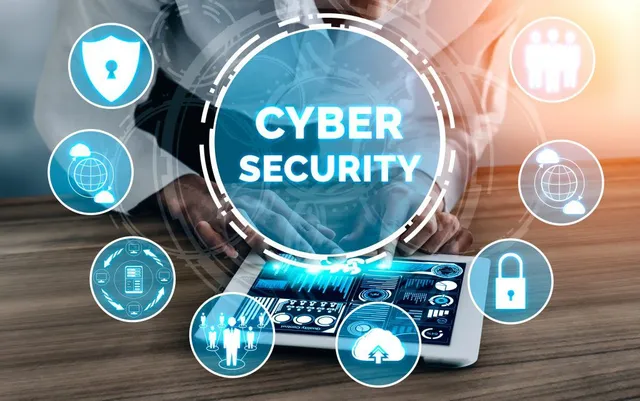In today’s increasingly digital world, cyber security is no longer optional—it’s essential. Businesses of all sizes are potential targets for cyberattacks, making it crucial to understand the different types of cyber security and how they can protect your organization. Whether you’re safeguarding sensitive data, securing applications, or defending against network threats, having a robust cyber security strategy is vital for operational success.
Let’s dive into the five essential types of cyber security every business should know to stay safe in a connected world.
1. Network Security: Protecting Your Digital Highways
At the heart of most business operations is a robust network infrastructure. Network security ensures that your business’s communication channels and data flow are protected from unauthorized access and malicious activities.
- Why It’s Important: Cybercriminals often exploit weak network systems to gain access to sensitive information or disrupt services.
- Key Tools and Measures: Firewalls, intrusion detection systems (IDS), and virtual private networks (VPNs) are common methods of securing networks. Regularly updating your network software and using strong access controls are essential steps to enhance protection.
Example Threats:
- Distributed Denial of Service (DDoS) attacks that overload your network.
- Malware infiltrating the system through unprotected connections.
2. Application Security: Guarding Your Software
Applications are gateways to valuable business data, but they can also be entry points for attackers if not properly secured. Application security involves protecting software applications during development and after deployment.
- Why It’s Important: Vulnerabilities in applications can lead to data breaches, customer information leaks, or loss of intellectual property.
- Strategies for Protection:
- Conducting vulnerability assessments and penetration testing.
- Encrypting sensitive data processed by applications.
- Regular software updates and patches.
Real-World Example:
A popular e-commerce platform suffered a data breach because an outdated plugin exposed user payment information. Regular updates and monitoring could have prevented this.
3. Cloud Security: Safeguarding Data in the Cloud
As businesses adopt cloud-based technologies, ensuring the safety of data stored online has become a top priority. Cloud security involves policies, technologies, and controls that protect cloud-stored information from threats.
- Why It’s Important: Cloud environments, while flexible and scalable, are prone to misconfigurations that can expose data to breaches.
- Effective Cloud Security Practices:
- Multi-factor authentication (MFA) for accessing cloud accounts.
- Encryption of data at rest and in transit.
- Regular audits and compliance checks to ensure proper configurations.
Emerging Threats:
- Misconfigured cloud settings leading to data exposure.
- Ransomware targeting cloud-stored backups.
4. Endpoint Security: Protecting Devices at the Edge
Endpoints, including laptops, smartphones, tablets, and IoT devices, are the “edges” of a network where users interact with business systems. Endpoint security ensures these devices are protected from unauthorized access or malware.
- Why It’s Important: With remote work on the rise, endpoints are increasingly targeted by hackers as they often have weaker security controls compared to central systems.
- Key Tools:
- Endpoint detection and response (EDR) solutions.
- Mobile device management (MDM) platforms.
- Antivirus and anti-malware software.
Best Practices:
Train employees on safe browsing and secure login practices. For example, encourage them to avoid public Wi-Fi for accessing sensitive business data unless using a VPN.
5. Operational Security (OpSec): Securing Processes and People
Operational security is about identifying potential risks in business processes and ensuring they don’t become security gaps. It involves looking at how sensitive data is handled, stored, and shared across an organization.
- Why It’s Important: Many cyberattacks exploit human errors, like accidentally sharing login credentials or mishandling sensitive files.
- Examples of OpSec Measures:
- Implementing clear data classification policies.
- Using secure communication channels for sensitive discussions.
- Regularly conducting security training for employees.
Human Factor Vulnerabilities:
Phishing attacks are a classic example of exploiting weak operational security, where employees might unknowingly provide access to sensitive systems.
Why Every Business Needs a Comprehensive Cyber Security Plan
Understanding these five types of cyber security is the first step toward protecting your business. However, simply knowing isn’t enough. Implementing a layered security approach, where multiple defenses work together, is critical. For example:
- Combine network security and endpoint security to protect data as it moves between systems.
- Pair application security with cloud security to ensure safety during software development and in cloud environments.
- Reinforce operational security with regular training sessions and strong internal policies.
Cyber Security Is a Continuous Process
Cyber threats evolve rapidly, and so should your security measures. Regular audits, updates, and employee training are vital to staying ahead of emerging risks. Remember, cyber security is not just about tools; it’s about creating a culture of security awareness across the organization.
Final Thoughts
In today’s digital age, understanding and implementing the five types of cyber security—network, application, cloud, endpoint, and operational security—can make or break your business’s success. Whether you’re a small startup or a large enterprise, investing in comprehensive cyber security measures is a necessity.
By addressing these areas and maintaining vigilance, you’ll not only protect your assets but also build trust with your clients and partners in a world where digital security is paramount.
